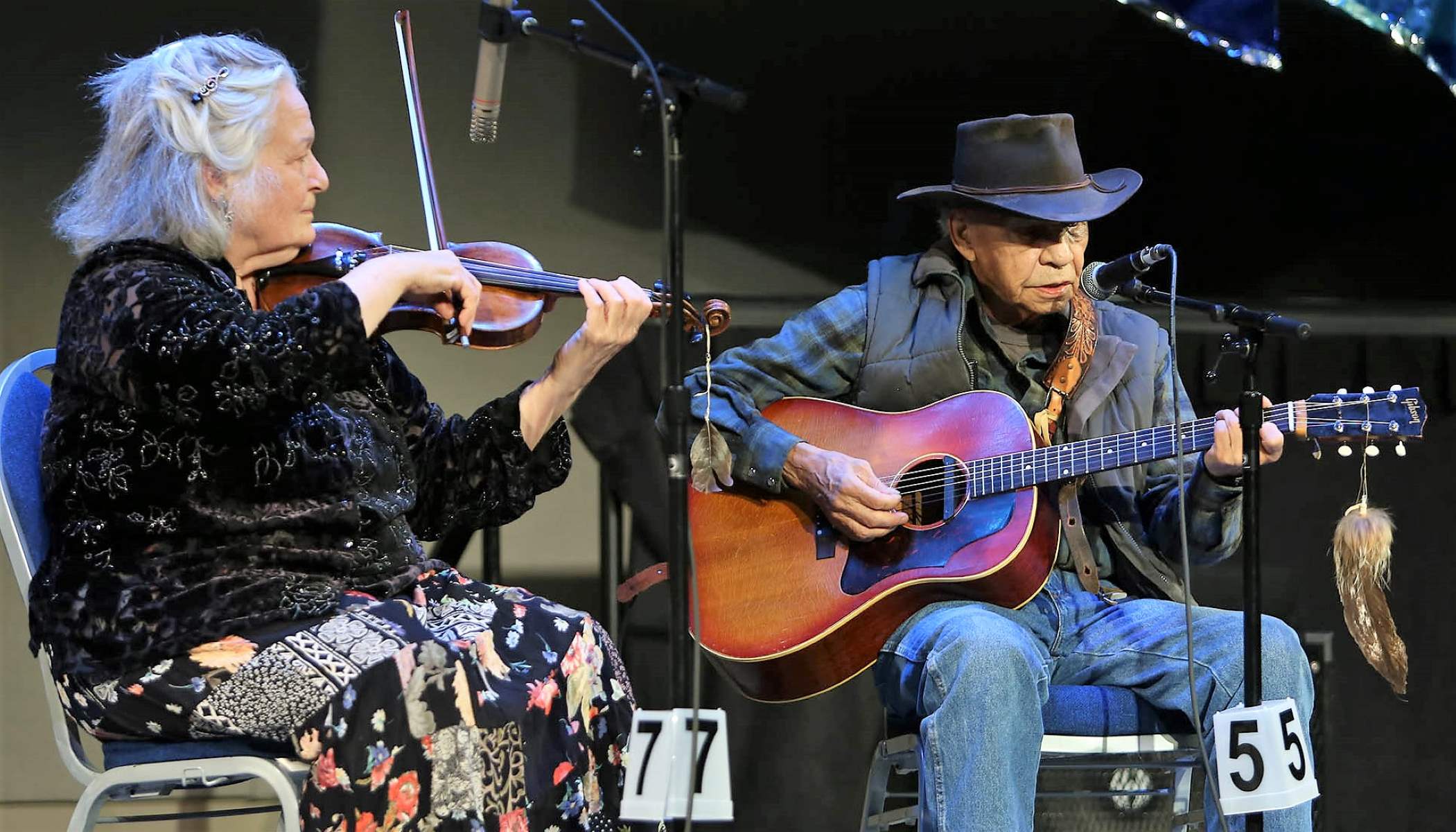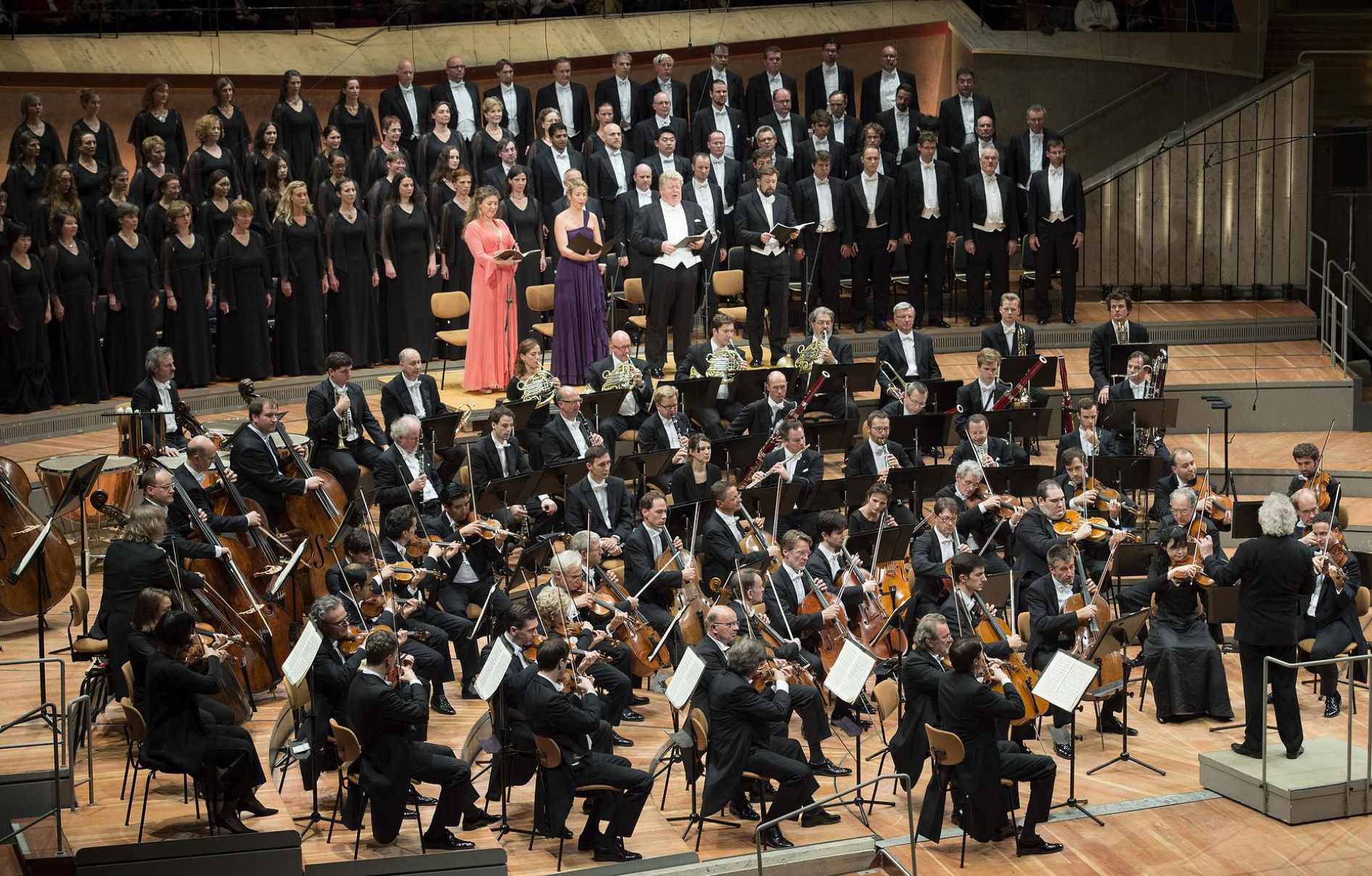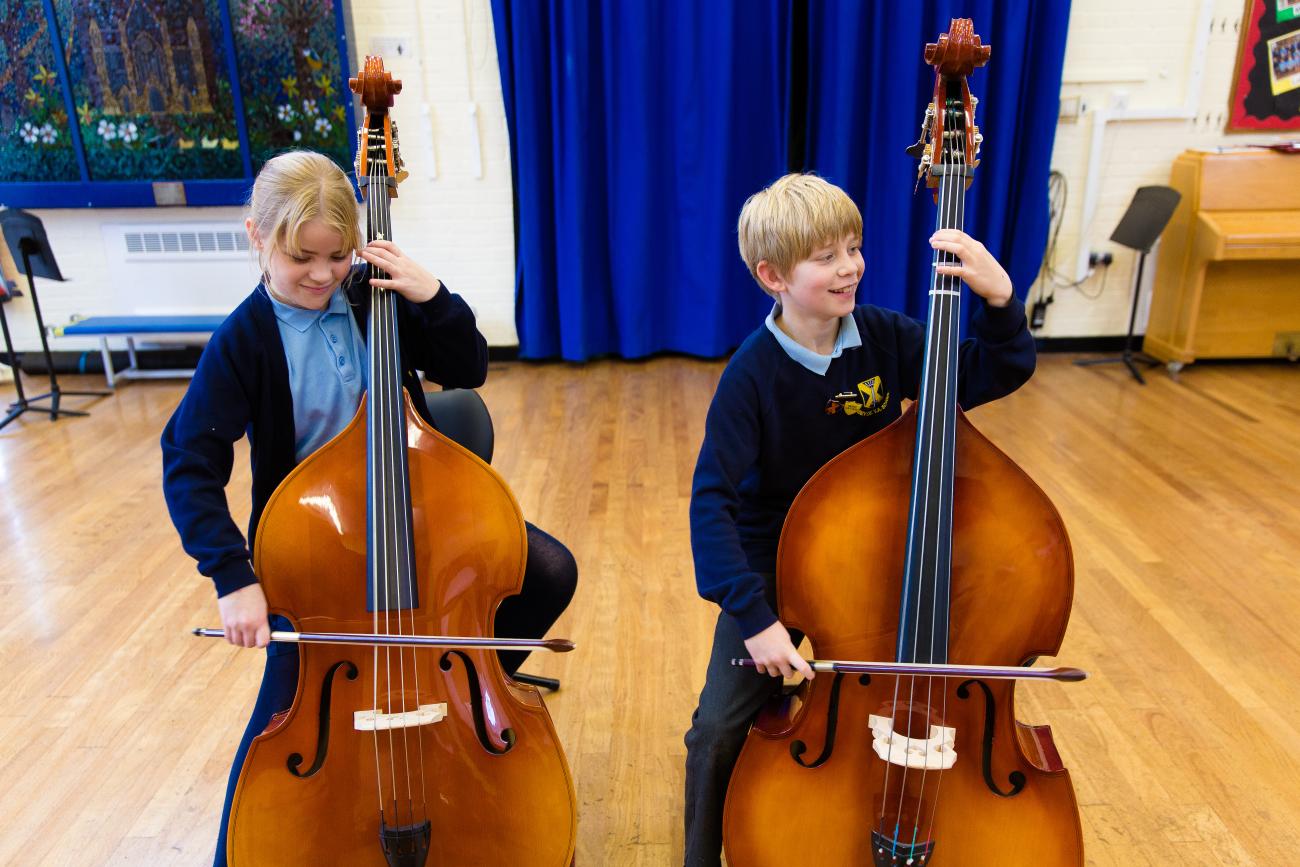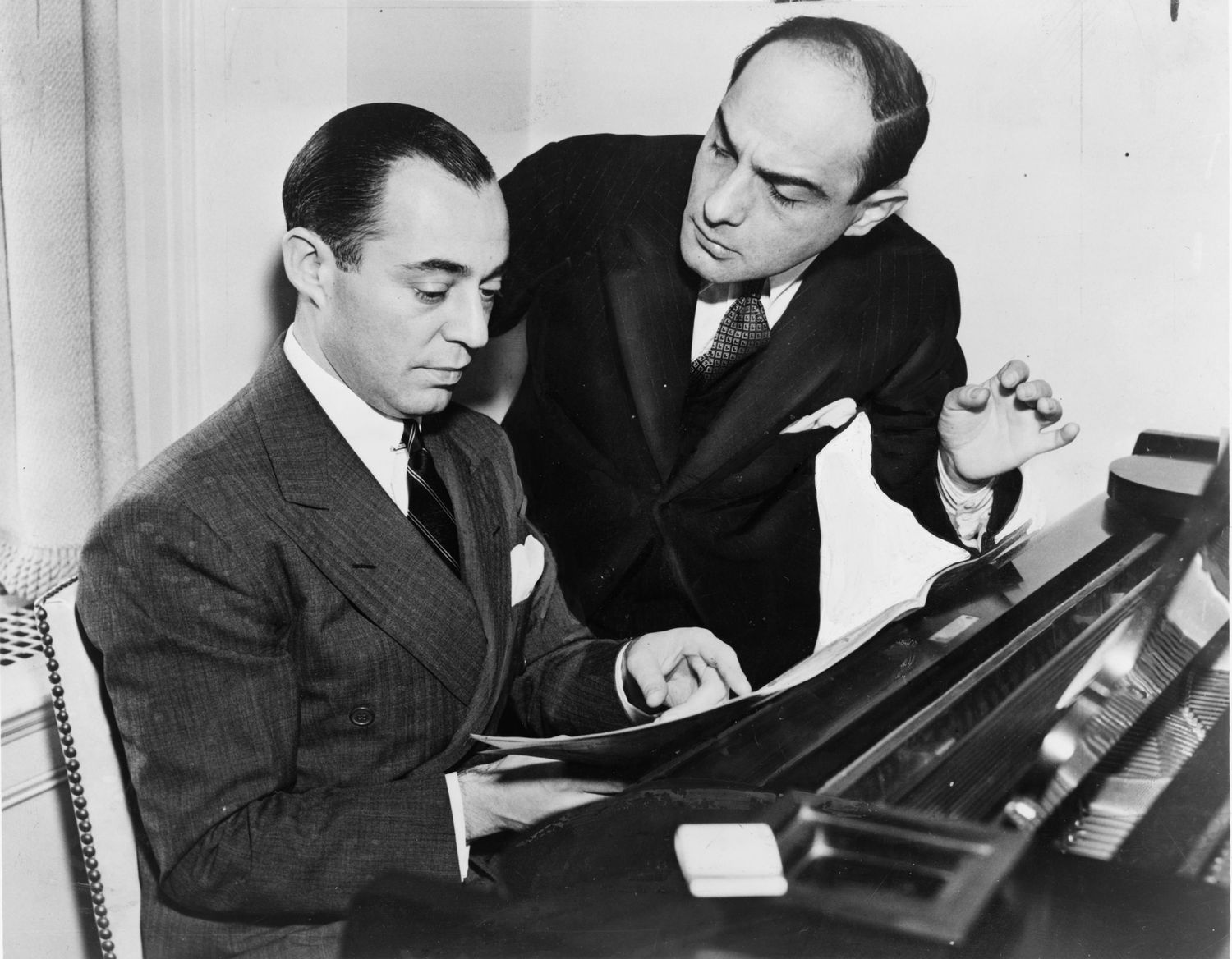Home>Genres>Folk>What Is The Difference Between Country And Folk Music


Folk
What Is The Difference Between Country And Folk Music
Modified: January 22, 2024
Discover the distinction between country and folk music with this insightful guide. Explore the roots, styles, and influences of these two genres, with a specific focus on folk.
(Many of the links in this article redirect to a specific reviewed product. Your purchase of these products through affiliate links helps to generate commission for AudioLover.com, at no extra cost. Learn more)
Table of Contents
- Introduction
- Definition of Country Music
- Definition of Folk Music
- Historical Background of Country Music
- Historical Background of Folk Music
- Musical Characteristics of Country Music
- Musical Characteristics of Folk Music
- Instruments Used in Country Music
- Instruments Used in Folk Music
- Lyrics and Themes in Country Music
- Lyrics and Themes in Folk Music
- Commercial Success and Mainstream Appeal
- Regional and Cultural Differences
- Influences and Evolutions
- Conclusion
Introduction
When it comes to music, the genres that often evoke a deep sense of nostalgia, storytelling, and a connection to cultural roots are country music and folk music. These genres have a rich history and have evolved over time, creating a distinct musical identity that resonates with people all over the world.
While country music and folk music may share some similarities, they also have unique characteristics that set them apart. Understanding the differences between these genres can help us appreciate the diversity and beauty of each one.
In this article, we will delve into the definitions, historical backgrounds, musical characteristics, instruments used, lyrics and themes, commercial success, regional and cultural differences, as well as the influences and evolutions of country music and folk music. By exploring these aspects, we will gain a deeper understanding of these genres and their significance in the world of music.
So, let’s embark on a journey to discover the fascinating world of country music and folk music!
Definition of Country Music
Country music is a genre that originated in the southern regions of the United States in the early 20th century. It is characterized by its distinctive blend of folk, blues, and traditional storytelling elements. Country music often features strong vocal harmonies, heartfelt lyrics, and a focus on themes such as love, heartbreak, rural life, and patriotism.
One of the defining features of country music is its emphasis on storytelling. Many country songs tell relatable stories that resonate with listeners, often drawing from personal experiences or capturing the essence of everyday life. The lyrics tend to be sincere and honest, often touching on universal emotions and experiences.
The instrumentation in country music typically includes acoustic and electric guitars, fiddles, banjos, drums, and pedal steel guitars, which contribute to the genre’s distinctive sound. Country music has evolved over time, incorporating elements of pop, rock, and other genres while still maintaining its traditional roots.
In terms of its subject matter, country music often explores themes of love, heartache, family, community, and the struggles and triumphs of everyday people. It captures the essence of rural life, connecting with listeners on a personal level by evoking a sense of nostalgia and longing for simpler times.
Over the years, country music has grown into a global phenomenon, with artists from different countries embracing the genre and adding their own unique flavors to it. From traditional country to modern country-pop crossovers, the genre continues to evolve and captivate audiences around the world with its heartfelt melodies and compelling lyrics.
Definition of Folk Music
Folk music is a genre deeply rooted in the cultural traditions and history of various communities. It encompasses a wide range of musical styles and instruments, often passed down orally or through generations. Folk music reflects the stories, customs, and experiences of a particular culture or region.
One of the defining characteristics of folk music is its emphasis on authenticity and the preservation of cultural heritage. Unlike other genres that may be more commercially oriented, folk music aims to capture the essence of a community and its traditions. It often features simple melodies, acoustic instruments, and unadorned vocals, allowing the focus to remain on the lyrics and storytelling.
Traditional folk songs are typically passed down through generations, with each rendition adding its own unique interpretation and nuances. These songs serve as a means of storytelling, capturing historical events, social commentary, and everyday experiences. They provide a glimpse into the collective consciousness of a community, reflecting their struggles, celebrations, and values.
Folk music is not limited to a specific geographic region or culture. It can be found in different parts of the world, each with its own distinct style and characteristics. From American folk and Celtic folk to African folk and Indian folk, the genre offers a diverse range of musical expressions.
While folk music is often associated with acoustic instruments such as guitars, banjos, fiddles, and mandolins, it also incorporates traditional and indigenous instruments specific to certain cultures. These instruments add a unique flavor and texture to the music, further enriching its cultural significance.
In recent years, folk music has experienced a revival in popularity, with both traditional and contemporary folk artists gaining recognition. Some contemporary folk musicians blend elements of other genres, such as indie, rock, or pop, while still preserving the storytelling and authenticity inherent in folk music.
Overall, folk music serves as a cultural tapestry, weaving together the stories, traditions, and spirit of a community. It is a celebration of diversity, connecting people to their roots and providing a window into the treasures of various cultures around the world.
Historical Background of Country Music
The roots of country music can be traced back to the early 20th century in the southern regions of the United States. The genre emerged as a blend of various musical traditions, including folk music, blues, gospel, and Appalachian sounds.
Country music has its origins in the rural areas of the southern states, where musical traditions were passed down through generations of families and communities. The songs served as a means of storytelling and a way to express the joys, sorrows, and struggles of everyday life.
One of the earliest forms of country music was known as “hillbilly music,” a term used to describe the music of the Appalachian Mountains. It was characterized by its raw and authentic sound, often featuring acoustic instruments like the guitar, banjo, fiddle, and mandolin.
In the 1920s, the advent of commercial recordings and radio broadcasts helped propel country music into the mainstream. Artists like Jimmie Rodgers and the Carter Family gained popularity, bringing country music to a wider audience. Their songs were rooted in the experiences of working-class people and spoke to the challenges and joys of everyday life.
During the following decades, country music continued to evolve and adapt to changing musical trends. In the 1950s, artists like Hank Williams and Patsy Cline brought a new level of emotional depth and sophistication to the genre. This era also saw the rise of honky-tonk music, characterized by its lively rhythms and lyrics that often dealt with heartbreak and hard-living.
In the 1960s and 1970s, country music experienced a period known as the “Nashville Sound,” which incorporated more polished production techniques and orchestration. Artists such as Johnny Cash, Loretta Lynn, and Dolly Parton became iconic figures in the genre during this time, connecting with audiences through their candid storytelling.
In the 1990s, country music experienced a resurgence in popularity, known as the “New Country” movement. Artists like Garth Brooks, Shania Twain, and Tim McGraw brought a fresh and modern sound to the genre, attracting a whole new generation of fans.
Today, country music continues to thrive, with artists exploring a wide range of sub-genres and pushing the boundaries of traditional country sounds. From the soulful ballads of Chris Stapleton to the contemporary pop-infused styles of Taylor Swift, country music remains a powerful medium for storytelling and connecting with audiences on a profound level.
Historical Background of Folk Music
Folk music has a rich and diverse history that spans across cultures and generations. It originated as an expression of the everyday experiences, struggles, and triumphs of people within specific communities, often passed down through oral tradition.
The roots of folk music can be traced back centuries, as it was an integral part of many ancient civilizations. The songs reflected the cultures, traditions, and stories of the people, serving as a means of communication and preserving their history.
In Europe, folk music developed alongside the rise of feudalism and was an important part of peasant life. The songs captured the hardships of rural labor, the joys of communal celebrations, and the desire for freedom and social justice. Often accompanied by traditional instruments such as the fiddle, accordion, and guitar, European folk music played a significant role in shaping the musical landscape.
In North America, folk music evolved from a blend of influences brought by immigrants from different parts of the world. African, European, and Indigenous music all played a role in shaping the unique sound of American folk music. Traditional folk songs began to intertwine with the music of enslaved Africans, giving rise to genres like blues, gospel, and spirituals.
The American folk music revival of the 20th century played a crucial role in popularizing the genre. Artists like Woody Guthrie and Pete Seeger used their music as a form of social commentary, addressing issues of inequality, labor rights, and civil rights. This era also saw the rise of folk festivals, where musicians from different backgrounds came together to celebrate and share their art.
Folk music has always been deeply connected to social and political movements. During times of social change and protest, folk songs have served as anthems of resistance and solidarity. The civil rights movement, anti-war movements, and the struggle for Indigenous rights all had folk music as an essential component in inspiring change and mobilizing communities.
Today, folk music continues to evolve and adapt to the changing times while still staying true to its roots. Musicians like Bob Dylan, Joan Baez, and Emmylou Harris have brought folk music to new audiences, blending traditional elements with contemporary styles.
With its focus on storytelling, cultural heritage, and a sense of community, folk music remains a powerful force in preserving traditions, connecting generations, and giving voice to the experiences and aspirations of people around the world.
Musical Characteristics of Country Music
Country music is known for its distinctive musical characteristics that define its sound and make it instantly recognizable. These musical elements contribute to the genre’s emotive and storytelling nature, creating a deep connection with listeners.
One of the prominent features of country music is its emphasis on strong vocal harmonies. Whether it’s a solo performance or a duet, country music often showcases powerful and heartfelt vocals that convey the emotions and narratives of the songs. The vocal delivery in country music ranges from smooth and melodic to raw and gritty, depending on the style and theme of the song.
The instrumentation in country music typically includes a mix of acoustic and electric guitars, fiddles, banjos, drums, and pedal steel guitars. The twangy sound of the pedal steel guitar, in particular, is a defining characteristic of country music, giving it a unique and nostalgic feel.
Rhythmically, country music often features a steady, mid-tempo beat that allows for easy swaying and tapping along. The rhythm section provides a solid foundation, while the melodic instruments add layers of texture and hooks that grab the listener’s attention.
Country music is heavily influenced by the blues, and this influence can be heard in the chord progressions. Simple chord structures, often based on the I-IV-V progression, create a familiar and catchy foundation for the melodies. These straightforward chord progressions allow for the focus to be placed on the lyrics and storytelling aspects of the songs.
The lyrics in country music play a crucial role in telling stories and connecting with listeners on an emotional level. The themes of the songs often revolve around love, heartbreak, family, rural life, patriotism, and personal experiences. The lyrics reflect the struggles, joys, and common experiences of everyday people, making them relatable and evoking a sense of nostalgia.
Country music has a wide range of sub-genres, each with its own musical characteristics. Traditional country, for example, has a more traditional and stripped-down sound, while country-pop incorporates elements of pop music, with polished production and catchy hooks.
Overall, the musical characteristics of country music, including powerful vocals, twangy instruments, simple chord progressions, and heartfelt lyrics, work together to create a warm and inviting sound that resonates with fans all over the world. Regardless of its various sub-genres and evolutions, country music remains rooted in its ability to tell stories and evoke deep emotions.
Musical Characteristics of Folk Music
Folk music is characterized by its simple and authentic musical style that reflects the cultural traditions and history of a particular community or region. The genre is known for its emphasis on storytelling and the use of acoustic instruments, creating a raw and intimate sound.
One of the defining characteristics of folk music is its reliance on acoustic instruments such as guitars, banjos, fiddles, mandolins, and harmonicas. These instruments are often played in a fingerpicking or strumming style, producing a melodic and rhythmic backdrop for the lyrics.
The melodies in folk music tend to be simple and easy to sing along to. They often feature repetitive motifs or melodic patterns that are both memorable and accessible. This simplicity allows the focus to be on the lyrics and the message of the song.
In terms of rhythm, folk music often has a steady and unobtrusive beat. It may feature a simple 2/4 or 4/4 time signature, allowing the listener to easily tap their foot or engage in a gentle sway. This rhythmic simplicity contributes to the genre’s intimate and heartfelt nature.
Vocals play a crucial role in folk music, as they carry the stories and messages of the songs. Folk singers typically have unadorned and expressive voices, focusing on conveying the emotions and narratives of the lyrics. Harmonies, when present, are often straightforward and serve to enhance the overall impact of the vocals.
Lyrically, folk music is known for its storytelling and narrative-driven nature. The lyrics reflect the lives, experiences, and traditions of a particular culture or community. They often delve into topics such as social issues, historical events, love, loss, and the human condition. The storytelling aspect of folk music creates a personal and intimate connection with the listener.
Folk music also tends to have a strong emphasis on authenticity and cultural preservation. Unlike commercialized genres, folk music aims to capture the essence of a community’s traditions and values. This authenticity is reflected not only in the musical style but also in the choice of songs and the way they are performed.
Furthermore, folk music has a strong sense of community and is often participatory in nature. It is performed and enjoyed in various settings, including folk festivals, coffeehouses, and intimate gatherings. Folk musicians and enthusiasts come together to share and celebrate the genre’s rich heritage.
In summary, the musical characteristics of folk music encompass acoustic instrumentation, simple melodies, expressive vocals, and storytelling lyrics. These elements combine to create an intimate and authentic musical experience that celebrates the cultural traditions and stories of communities around the world.
Instruments Used in Country Music
Country music utilizes a range of instruments that contribute to its distinctive sound and create the genre’s iconic melodies and rhythms. These instruments play a crucial role in shaping the overall feel and character of country music.
One of the most recognizable instruments in country music is the guitar. Both acoustic and electric guitars are commonly used, providing the foundation for many country songs. Acoustic guitars, with their warm and resonant tones, are often employed in more traditional or stripped-down country styles. Electric guitars, on the other hand, add a twangy and amplified sound, especially in modern country-rock or country-pop genres.
The fiddle, also known as the violin, is another essential instrument in country music. Played with a bow, the fiddle adds a lively and energetic sound to many country songs, often taking on the role of the lead instrument in instrumental breaks or fiddle solos. Its lilting melodies and expressive playing style evoke a sense of joy and celebration.
The banjo is a distinctive and prominent instrument in country music. With its bright and percussive sound, the banjo often provides the driving rhythm and adds a lively element to country songs. It is particularly associated with bluegrass and old-time country styles, contributing to the genre’s energetic and toe-tapping beats.
The pedal steel guitar is a signature instrument in country music, known for its smooth and evocative sound. Played with a series of foot pedals and knee levers, the pedal steel guitar produces gliding melodies and rich harmonies. Its soulful tones are often heard in country ballads and add a touch of nostalgia and emotion to songs.
The drums and bass guitar form the rhythm section in country music, providing the solid foundation and groove for the songs. The drums add a driving and dynamic beat, while the bass guitar holds down the low end, adding depth and reinforcing the melodies. Together, they create the backbone of the music and keep the tempo and energy flowing.
In addition to these core instruments, country music incorporates other instruments such as the mandolin, piano, harmonica, and accordion, among others. These instruments add texture, flavor, and additional melodic elements to the music, enhancing the overall sound and adding depth to the arrangements.
Ultimately, the combination of these instruments creates the rich and diverse sonic tapestry that defines country music. From the twang of the guitar to the lilt of the fiddle and the driving rhythm section, each instrument plays a role in capturing the spirit and essence of country music, making it a beloved genre with a distinct and timeless sound.
Instruments Used in Folk Music
Folk music, with its emphasis on simplicity and authenticity, utilizes a variety of instruments that contribute to its unique sound and character. These instruments, often acoustic in nature, help create the rich and earthy tones that are synonymous with folk music.
The guitar is one of the most commonly used instruments in folk music. Whether it’s a steel-string acoustic guitar or a nylon-string classical guitar, its versatility and warm sound make it an integral part of folk music. The guitar provides rhythmic accompaniment and can also take on melodic lead lines, serving as a versatile instrument in both solo and ensemble performances.
The banjo is another prevalent instrument in folk music, particularly in traditional American and bluegrass styles. Known for its distinctive twangy sound, the banjo adds a lively and energetic element to the music. Its unique picking patterns and fast-paced rolls contribute to the rhythmic drive and joyful spirit often associated with folk music.
The fiddle, often used interchangeably with the violin, plays a significant role in folk music. Its expressive and soulful melodies can be heard in various styles of folk music around the world. The fiddle brings an emotional depth and richness to the music, captivating listeners with its evocative tones and virtuosic performances.
In addition to string instruments, folk music incorporates various wind and percussion instruments. The harmonica, also known as the mouth harp, is a portable and versatile instrument commonly found in folk music. Its soulful and bluesy sound adds a touch of nostalgia and spontaneity to the music, often used for captivating solos or in accompaniment to the singing.
The mandolin, with its bright and lively sound, is another common instrument in folk music. Its rapid strumming and melodic picking enhance the rhythmic drive and provide a distinctive tonal quality to the music. The mandolin is particularly prominent in bluegrass and Celtic folk music.
Percussion instruments also find their place in folk music, adding rhythmic elements to enhance the overall sound. Instruments such as the bodhran, a traditional Irish drum, or the tambourine, which provides a jingling and percussive texture, can often be heard in folk music, creating an engaging and vibrant backdrop.
Furthermore, folk music often embraces unique and culturally specific instruments. For example, the sitar (Indian), the bouzouki (Greek), the ukulele (Hawaiian), and the charango (South American) are all instruments that contribute to the diverse and global nature of folk music. These instruments enrich the music with their distinct timbres and cultural significance.
The combination of these instruments in folk music creates a soulful and intimate musical experience. From the gentle strumming of the guitar to the energetic plucking of the banjo and the emotive melodies of the fiddle, these instruments evoke a sense of tradition, cultural heritage, and storytelling that define the essence of folk music.
Lyrics and Themes in Country Music
Country music is renowned for its heartfelt and relatable lyrics that tell stories of love, heartbreak, and the experiences of everyday life. The lyrics in country music often explore a range of themes that resonate with listeners and evoke a sense of nostalgia and connection.
One recurring theme in country music is love. Country songs express the highs and lows of romantic relationships, capturing emotions such as passion, devotion, heartbreak, and longing. The lyrics often portray the complexities of love and the challenges faced in maintaining relationships, making them relatable to many listeners.
Country music also frequently delves into themes of heartbreak and loss. The lyrics express the pain of failed relationships, betrayal, and the deep ache of a broken heart. These songs provide a cathartic outlet for both the performers and the audience, allowing them to connect with their own experiences of heartache and find solace in the music.
Another common theme in country music is the celebration of rural life. Many country songs pay homage to the simple joys and struggles of life in small towns and the rural countryside. The lyrics often reflect on the beauty of nature, the values of hard work, and the close-knit communities that are prevalent in rural areas.
Country music also tends to explore themes of family and home. Songs about family relationships, the bond between generations, and the importance of home and roots are frequently found in the genre. These songs evoke a sense of warmth, stability, and the comforting presence of loved ones.
Patriotism is another recurring theme in country music. Many country songs express love and pride for one’s country, honoring the values of freedom, Americana, and the sacrifices made by those in the armed forces. These songs often strike a chord with listeners who identify with their country’s heritage and traditions.
Additionally, country music covers a wide range of other topics and experiences, including personal struggles, faith, self-reflection, and social issues. From songs that address addiction and redemption to those that provide social commentary and shed light on important issues, country music can be a powerful platform for storytelling and raising awareness.
The lyrical content of country music is typically honest, vulnerable, and rooted in personal experiences. The storytelling aspect allows listeners to empathize with the emotions and narratives conveyed. This authenticity is one of the reasons why country music has such a loyal and dedicated fan base.
In summary, the lyrics and themes in country music cover a wide range of relatable and deeply human experiences. From love and heartbreak to family, patriotism, and reflections on rural life, country music’s lyrics reflect the joys, struggles, and universal emotions that resonate with listeners of all walks of life.
Lyrics and Themes in Folk Music
Folk music is known for its heartfelt and thought-provoking lyrics that delve into a wide range of themes. The lyrics in folk music reflect the cultural heritage, social struggles, and personal narratives of a particular community or region. They often serve as a means of storytelling, capturing historical events, social commentary, and the human experience.
One of the prominent themes in folk music is social justice and political activism. Folk songs have long been used as a platform to address inequality, advocate for civil rights, and shed light on societal issues. From protest songs of the civil rights era to songs that speak out against war, discrimination, and oppression, folk music provides a voice for the marginalized and inspires positive change.
Folk music also explores themes of love and relationships. The lyrics portray the complexities of romantic relationships, encompassing elements of passion, longing, and heartbreak. These songs often approach love from a realistic and introspective perspective, capturing the spectrum of emotions and experiences that come with it.
Historical and cultural storytelling is another prominent theme in folk music. The lyrics delve into the history and traditions of a community, preserving cultural heritage and celebrating the accomplishments and struggles of previous generations. These songs serve as a connection to the past, passing down stories and traditions to future generations.
Nature and the environment are often celebrated in folk music. The lyrics reflect a deep appreciation for the beauty and power of the natural world, expressing a desire to protect and preserve it. Folk songs often embody a sense of reverence for the land, exploring themes of environmental stewardship and the interconnectedness between humans and nature.
Personal introspection and self-reflection are common themes in folk music as well. The lyrics delve into the human condition, addressing themes of identity, purpose, and personal growth. These songs provide a means of introspection, encouraging listeners to contemplate their own experiences and find meaning within themselves.
Folk music also engages with themes of morality, spirituality, and faith. The lyrics may explore questions of ethics, the search for meaning, and different belief systems. These songs invite contemplation and offer a platform for introspection and introspective discussions about religion and spirituality.
Furthermore, folk music often highlights the struggles and resilience of working-class people. The lyrics shed light on the labor movement, economic hardships, and the impact of social and political systems on everyday individuals. These songs serve as anthems of solidarity and amplify the voices of those who have faced adversity.
In summary, the lyrics and themes in folk music encapsulate a rich tapestry of stories, historical events, social commentary, and personal reflections. Whether addressing social justice issues, love and relationships, cultural heritage, or personal introspection, folk music provides a platform for expression, empathy, and understanding of the human experience.
Commercial Success and Mainstream Appeal
While both country music and folk music have roots in traditional and authentic storytelling, they have taken different paths when it comes to commercial success and mainstream appeal.
Country music, with its blend of traditional sounds and contemporary influences, has achieved widespread commercial success and has a large mainstream following. It has crossed over into popular music charts and has produced numerous chart-topping hits and multi-platinum albums. Country music festivals draw massive crowds and country artists have gained recognition on global stages. The genre has also enjoyed commercial success through radio airplay, streaming platforms, and cross-promotion with other genres.
The mainstream appeal of country music can be attributed to several factors. One is its ability to embrace a wide range of sub-genres, including traditional country, country-pop, and country-rock, catering to diverse listener preferences. Additionally, country music has embraced collaborations with popular artists from other genres, bridging the gap between country and mainstream pop, rock, and hip-hop.
On the other hand, folk music, with its emphasis on authenticity and preserving cultural traditions, may have a more niche following and lesser commercial success in the mainstream music industry. Folk music festivals attract dedicated fans, and folk artists often have a loyal and passionate fan base. However, folk music may not receive the same level of mainstream exposure or commercial success as country music.
Despite this, folk music has enjoyed moments of mainstream success through notable artists and influential cultural movements. The folk music revival of the 1960s, with artists such as Bob Dylan and Joan Baez, played a pivotal role in introducing folk music to a wider audience and influencing popular music at the time. Contemporary folk artists like Mumford & Sons and The Lumineers have also achieved some degree of mainstream success, incorporating folk elements into their music while appealing to a broader audience.
It is important to note that both country music and folk music have devoted fan bases that appreciate the artistry, storytelling, and cultural relevance of these genres. The commercial success and mainstream appeal of a genre do not solely determine its value or impact. Both genres continue to evolve and find ways to connect with audiences by staying true to their artistic integrity and engaging listeners through their unique sounds and narratives.
Regional and Cultural Differences
Country music and folk music exhibit distinct regional and cultural differences that contribute to their rich tapestry of sounds and expressions. These differences stem from the unique history, traditions, and influences of various communities and geographical regions.
Country music reflects diverse regional styles shaped by the cultural heritage of different areas. For instance, the Nashville sound emerged in the American South, particularly in Tennessee, and is known for its polished production and orchestration. The Bakersfield sound, on the other hand, originated in California and encompasses a more stripped-down and honky-tonk influenced sound. The Texas country style highlights the Lone Star State’s distinct musical heritage, blending western swing, honky-tonk, and cowboy themes.
Similarly, folk music exhibits regional variations shaped by local customs, history, and ethnic influences. American folk music, for example, has distinct styles, including Appalachian folk music, blues, and Cajun music, reflecting the diverse cultural heritage of different regions within the United States. Celtic folk music, originating in Ireland, Scotland, and other Celtic regions, features distinctive melodies, storytelling traditions, and traditional instruments like the bodhran and bagpipes.
Moreover, regional and cultural differences in country and folk music can be found beyond the United States. Country music has taken various forms in different countries, such as Canadian country music, Australian country music, and British country music. Each country’s unique history and musical customs shape these regional variations, resulting in diverse sounds and themes that reflect the local culture and identity.
Similarly, folk music around the world displays regional nuances and cultural influences. From the vibrant rhythms of African folk music to the haunting melodies of Eastern European folk music, each region infuses its own unique flavors into the genre. Instruments, vocal styles, and lyrical themes vary greatly, showcasing the diversity of cultural expressions within folk music.
Moreover, folk music often highlights cultural traditions and the struggles faced by different communities. Songs may address historical events, social issues, and specific cultural practices, shedding light on the values, struggles, and triumphs of a particular group. This cultural specificity contributes to the rich tapestry of regional and cultural differences within folk music.
Despite these regional and cultural differences, country music and folk music also share common threads. Both genres prioritize storytelling and draw on personal experiences and emotions. They serve as platforms for expressing and preserving cultural identity, traditions, and history.
In summary, country music and folk music showcase regional and cultural differences that contribute to the diverse sounds and narratives within these genres. Influenced by historical context, regional customs, and cultural heritage, country and folk music continue to evolve and captivate audiences with their distinct regional expressions and deep-rooted connections to local identities.
Influences and Evolutions
Country music and folk music have been shaped by a myriad of influences and have experienced notable evolutions over time. These genres have continually evolved to incorporate new sounds, technologies, and cultural influences while retaining their core elements and traditions.
One of the significant influences on country music has been the blending of traditional folk sounds with other genres. The blues, a genre rooted in African-American musical traditions, played a crucial role in shaping early country music. The incorporation of blues elements brought a richness and emotional depth to the genre, influencing artists like Hank Williams and Johnny Cash.
In the 1950s and 1960s, country music experienced a pop-oriented evolution in what became known as the “countrypolitan” sound. This evolution was driven by influences from the burgeoning Nashville sound and the desire to appeal to a wider mainstream audience. Artists like Patsy Cline and Glen Campbell embraced orchestration and polished production techniques, bridging the gap between country and pop music.
In recent decades, country music has further embraced influences from other genres such as rock, pop, and hip-hop. The rise of country-pop crossovers, with artists like Taylor Swift and Florida Georgia Line, has brought a contemporary and commercially appealing sound to the genre. This blending of styles has attracted a broader audience and contributed to country music’s continued relevance in the mainstream music industry.
Folk music has also undergone notable evolutions throughout its history. In the 1960s, the folk music revival brought folk music to the forefront of popular culture, as artists like Bob Dylan and Joan Baez introduced a more introspective and politically charged approach to the genre. Their music addressed social issues, civil rights, and the changing times, influencing the broader music scene of the era.
Modern folk music has seen the emergence of artists who blend traditional folk elements with contemporary influences. Musicians like Mumford & Sons and The Lumineers have incorporated elements of indie and alternative rock into their music, bringing a fresh and modern sound to the genre. This evolution has attracted a new generation of fans while still embracing the storytelling traditions and authenticity that define folk music.
Technological advancements have also influenced the evolution of both country and folk music. The advent of recording technology in the early 20th century allowed for the dissemination of music on a larger scale, shaping the way these genres were recorded, distributed, and consumed. The rise of digital platforms and streaming services in recent years has further democratized access to music, providing new opportunities for independent and emerging country and folk artists to reach global audiences.
The influences and evolutions in country and folk music have not only transformed the sound and reach of these genres but have also sparked conversations about their identity and authenticity. However, at the heart of these discussions, the dedication to storytelling, cultural preservation, and a deep connection to the human experience remains fundamental to both genres.
Conclusion
Country music and folk music share a deep connection to storytelling, cultural heritage, and the human experience. While they have distinct characteristics and regional variations, both genres have left an indelible mark on the musical landscape, captivating audiences with their heartfelt lyrics, evocative melodies, and authentic narratives.
Country music has achieved widespread success and commercial appeal, with its diverse sub-genres and ability to cross over into mainstream pop, rock, and hip-hop. The genre continues to evolve and attract new fans while staying true to its roots and the themes that resonate with listeners.
In contrast, folk music holds a more niche following, rooted in its commitment to authenticity, cultural preservation, and social commentary. Folk music serves as a platform for storytelling, historical preservation, and the exploration of personal and societal struggles.
Both genres have been influenced by various musical styles, technological advancements, and social movements, shaping their evolution over time. From the incorporation of blues into country music to the folk music revival of the 1960s, these genres have adapted, embraced new influences, and maintained their relevance in an ever-changing musical landscape.
While country music has achieved greater commercial success and mainstream appeal, folk music continues to inspire through its cultural richness, regional variations, and dedication to preserving cultural identity and traditions.
In the end, country music and folk music hold a deep bond as musical genres that connect people through storytelling, emotions, and shared experiences. Regardless of their differences, both genres offer a window into the human condition, allowing us to reflect, empathize, and find solace in the melodies and lyrics that have become a part of our cultural fabric.











